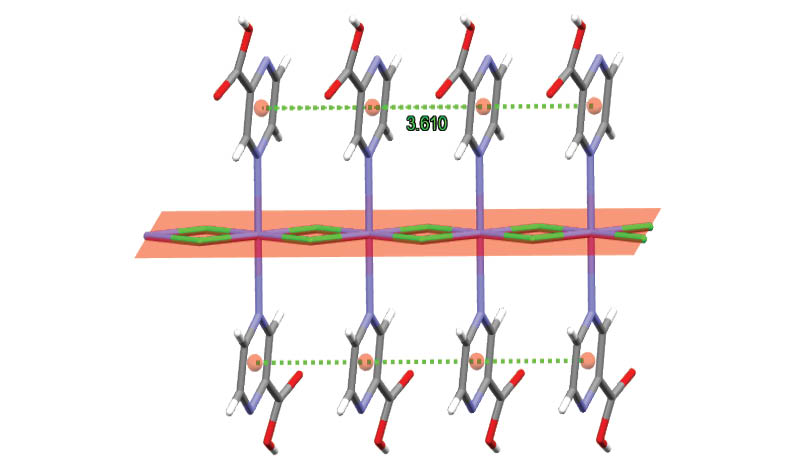Manganese, cobalt, nickel and zinc complexes with pyrazine-2-carboxylic acid
DOI:
https://doi.org/10.17344/acsi.2024.9095Abstract
Abstract New complexes of zinc (1), manganese(II) (2 and 2a), cobalt(II) (3) and nickel(II) chloride (4), with pyzaH (pyrazine-2-carboxylic acid) were synthesized. The pyzaH molecules are coordinated as monodentate ligands only through heterocyclic nitrogen in 1, 2 and 3, as shown by single crystal X-ray diffraction analysis. The chloride ions are coordinated as terminal ligands in 1, [ZnCl2(pyzaH)2]×2H2O, but act as bridging ligands in the 1D complexes [MCl2(pyzaH)2]n×2nH2O (M = Mn, 2, Co, 3). The supramolecular architectures of the complexes differ due to the coordination of the chlorides, the hydrogen bonds and the parallel stacking arrangements of the pyzaH molecules. In contrast to the isolated crystals of 1, 2 and 3, the manganese(II) (2a) and nickel(II) (4), compounds do not contain water. According to the IR spectra and the results of thermal analyzes, the proposed formula is [MCl2(pyzaH)2]. Powder X-ray and thermal analysis results demonstrate the isostructural nature of complexes 2a and 4. The low thermal stability of 1 is due to the monodentate coordination of pyzaH in 1. Thermal decomposition of 1, 2a and 4 in air produces oxides MO (M = Mn, Ni, Zn).

Downloads
Published
Issue
Section
License
Copyright (c) 2025 Saša Petriček

This work is licensed under a Creative Commons Attribution 4.0 International License.
Except where otherwise noted, articles in this journal are published under the Creative Commons Attribution 4.0 International License
